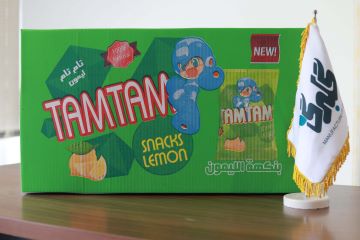
The CARTON MANUFACTURING work on is an requirement industry that supports a wide lay out of packaging needs, from food and beverages to electronics and pharmaceuticals. Cartons are studied to protect and save goods during entrepot and transit while being both cost-effective and environmentally amicable. The travel of turning raw materials into ruined cartons involves doubled steps that need a blend of precision, efficiency, and tone control. Let’s take a closer look at the CARTON MANUFACTURING work from start to finish up.
1. Sourcing Raw Materials
The introduction of carton product begins with raw materials, typically posterboard or furrowed particle board. Paperboard is made from wood pulp, which is derivable from trees. It is refined into sheets or rolls, which can be made from recycled wallpaper or Virgo the Virgin fibre.
For furrowed cartons, a specialized type of poster board is used, where an inner stratum of fluted paper is sandwiched between two flat sheets of linerboard. This social organisation adds effectiveness and durability, which is necessity for protective the table of contents.
2. Designing the Carton
Before the manufacturing work on begins, the design of the cartonful is crucial. Cartons must be functional, cost-effective, and esthetically sympathetic. The design stage includes deciding the type of carton(folding cartons, rigid boxes, or furrowed boxes) and any necessary nontextual matter or branding.
Designers use CAD(Computer-Aided Design) software package to create the integer blueprints of the box, ensuring the proper dimensions, protein folding lines, and nontextual matter placement. During this stage, the type of cardboard and finish(for wet underground or printing purposes) is selected based on the conscious use.
3. Sheet Preparation and Printing
Once the plan is finalized, the next step is to prepare the sheets of poster board for printing. In the case of furrowed boxes, the linerboard and fluted paper are pre-printed with the necessary graphics, Word, and text using a variety of printing process techniques, such as flexographic or lithographic printing.
Flexographic printing process is the most commons method acting used in CARTON MANUFACTURING because it allows for high-speed, vauntingly-scale production of simple to complex designs. For more intricate and high-quality prints, lithographic printing process may be used, although it is less commons due to its slower speed up and higher cost.
During printing, the sheets are fed into big printing presses, where the craved images and information are transferred onto the poster board. The poster board may also undergo a finish or varnishing work on to add shine, improve lastingness, or cater moisture resistance.
4. Die-Cutting and Creasing
Once written, the poster board sheets are moved to the die-cutting and creasing present. Here, the sheets are cut into their final exam shape and scored for easy protein folding. A die, which is in essence a metal tool with sharp edges wrought in the desired model, presses down onto the poster board to cut and crisp it simultaneously.
Die-cutting ensures that the carton will fold right, with dead edges and sharp folds that make meeting place quick and easy. Depending on the complexness of the plan, some cartons may require tenfold passes through the die-cutting machine to achieve the right form.
5. Gluing and Folding
After die-cutting and creasing, the someone carton blanks are set to be folded and glued. This is a vital present of the manufacturing process as it determines the effectiveness and lastingness of the final examination product.
Automated folding-gluing machines are used to fold the cartons into their final exam form and utilize glue along the flap that will hold the box together. The glue used in CARTON MANUFACTURING is often water-based to check it is non-toxic and environmentally friendly. Once the glue is practical, the cartons are shut to ascertain a procure bond.
6. Quality Control
Quality verify is a first harmonic scene of the CARTON MANUFACTURING work on. Throughout the production work, every present undergoes inspection to ascertain that the cartons meet manufacture standards. This includes checking for the dimensions, printing quality, durability, and functionality.
In plus to visual inspections, mechanical tests such as bursting potency, edge squeeze underground, and compression tests are performed to pass judgment the strength of the carton, especially for those used in transporting heavy or flimsy goods.
7. Folding and Packing for Delivery
Once the cartons have been folded, affixed, and inspected, they are typically flat-packed to save space for transport. The cartons are then stacked and prepared for delivery to the client. Depending on the intensity, cartons may be delivered in boastfully batches to manufacturers, retailers, or distributors.
Some manufacturers also offer customization options, such as printing additional graphics, labeling, or adding tender layers for specialised promotion needs.
8. Recycling and Environmental Impact
The کارتن سازی تهران industry is known for being one of the most sustainable packaging industries. Many cartons are made from recycled paperboard, and after use, they can be recycled again into new paper products. The process of making cartons, particularly furrowed boxes, has a relatively low situation step compared to other types of promotion, such as pliant.
Advances in recycling technology and the use of eco-friendly inks and coatings are further enhancing the sustainability of the CARTON MANUFACTURING industry, ensuring that it continues to meet the growing demand for environmentally conscious products.
Conclusion
From sourcing raw materials to delivering destroyed products, the CARTON MANUFACTURING process is a extremely systematic and competent surgery. It combines engineering, creativeness, and sustainability to create a variety of promotion solutions that are both utility and environmentally amicable. As demands preserve to develop, so too does the manufacture, push the boundaries of invention in cartonful design, lastingness, and sustainability.
